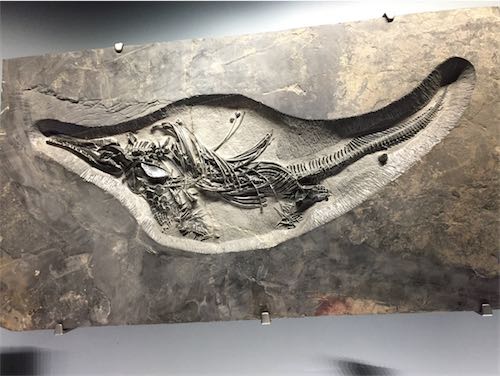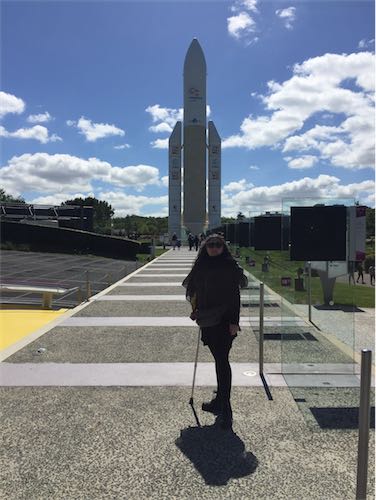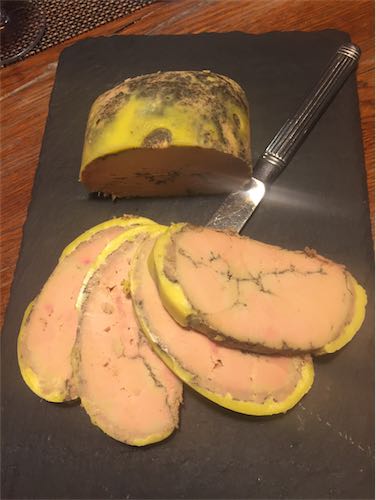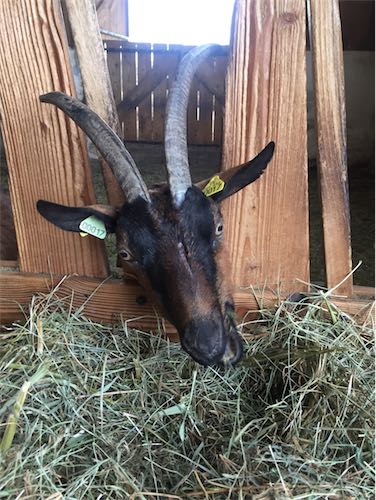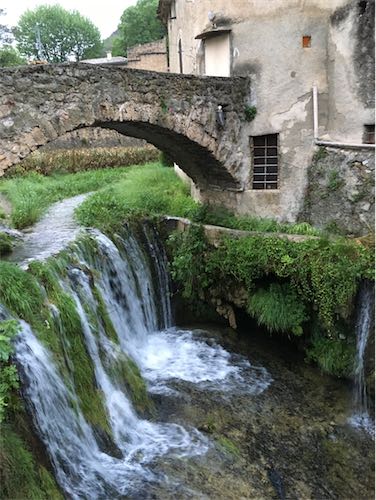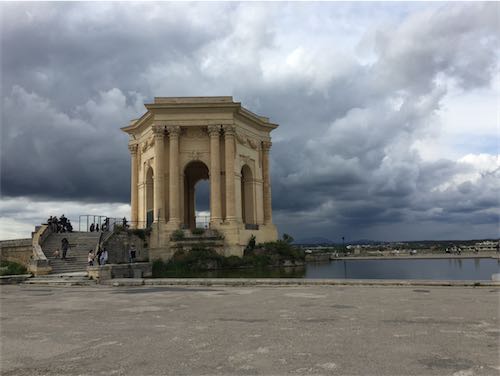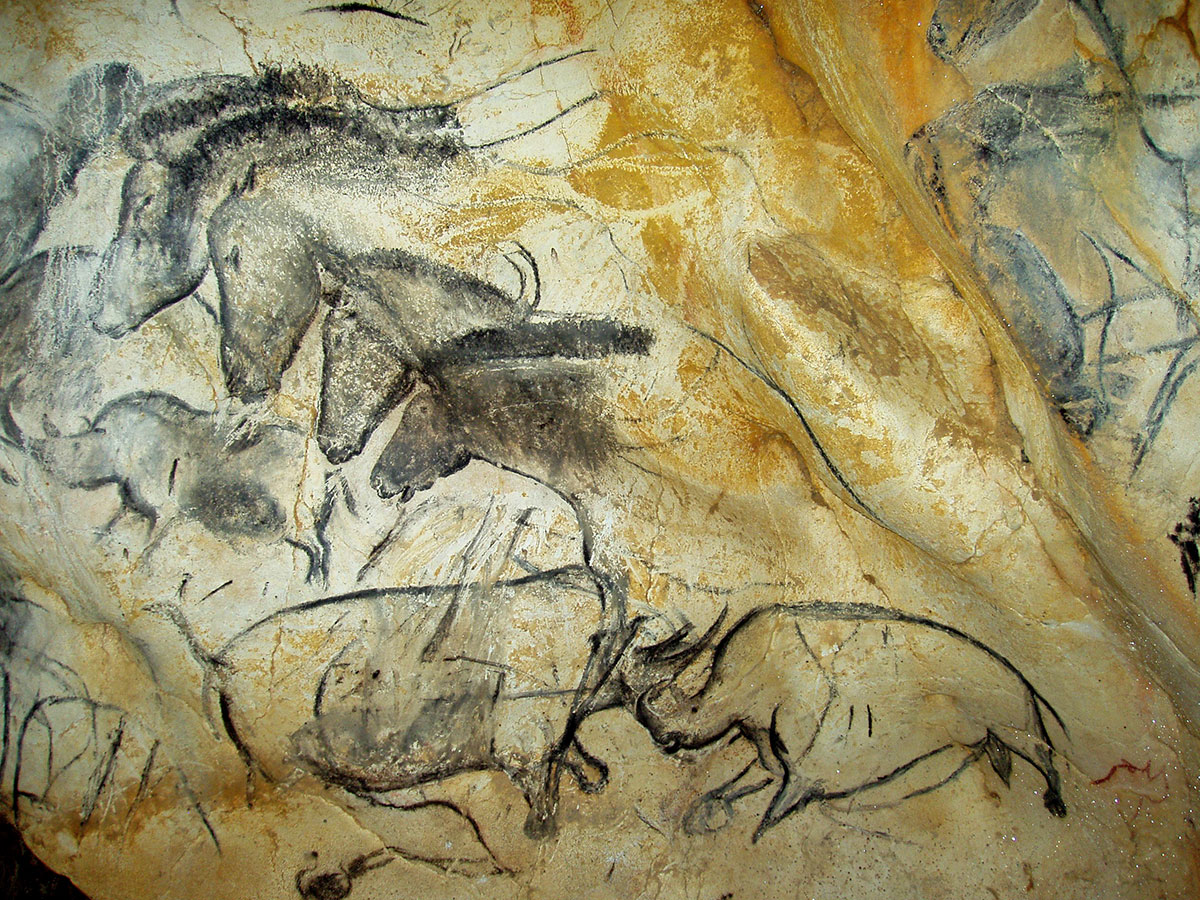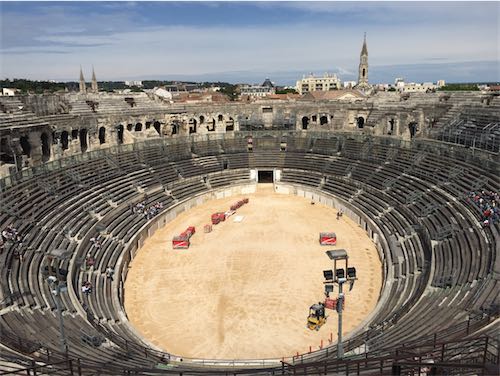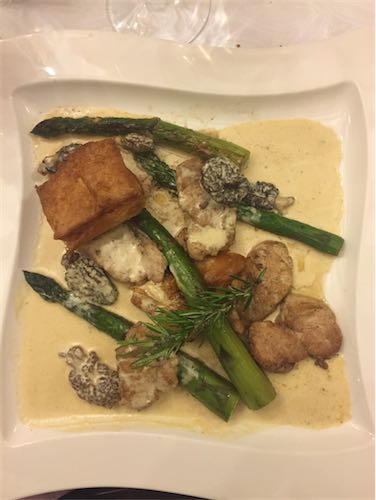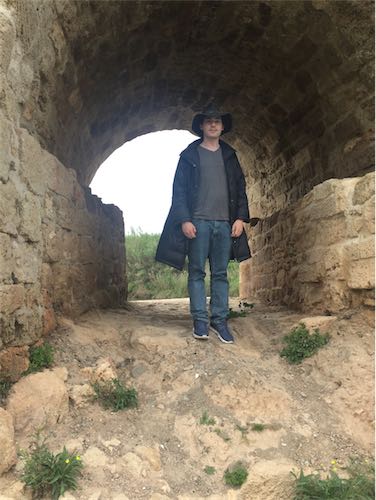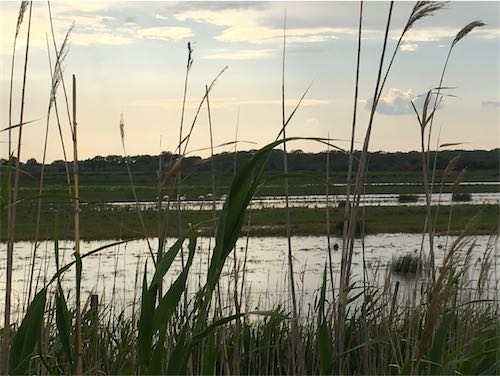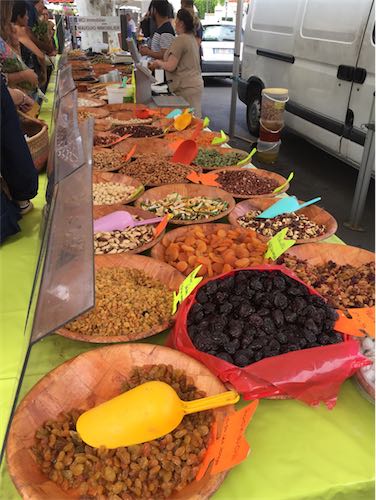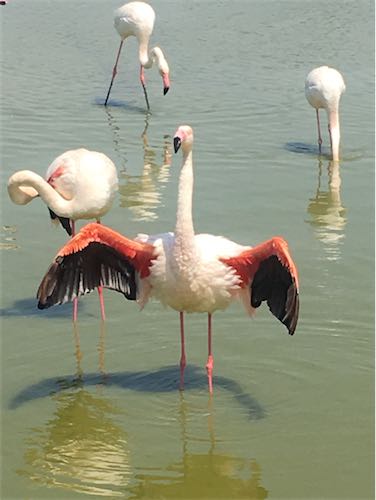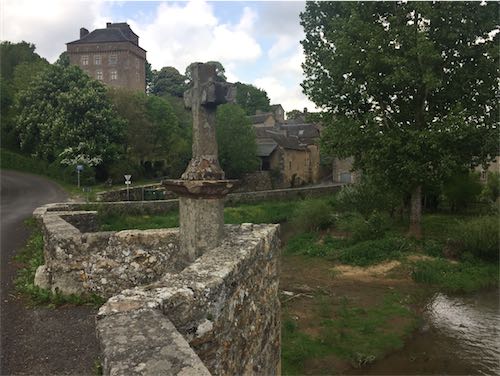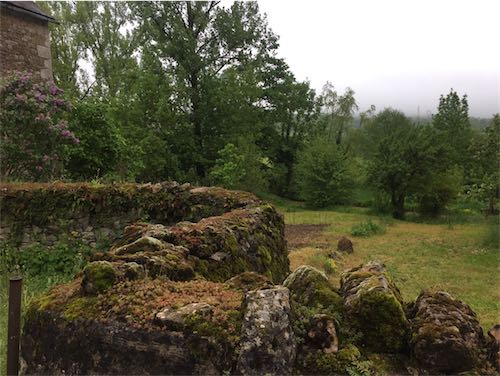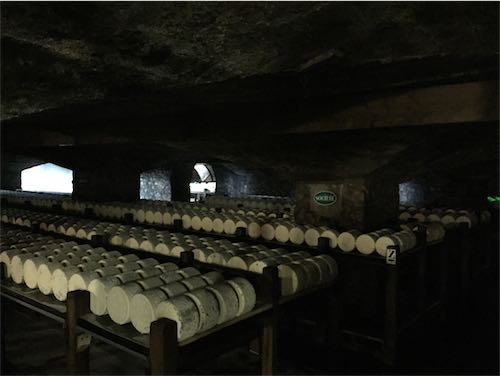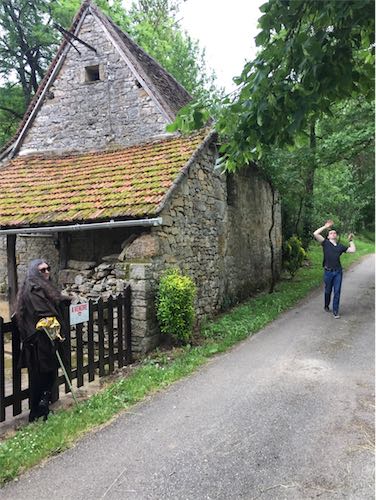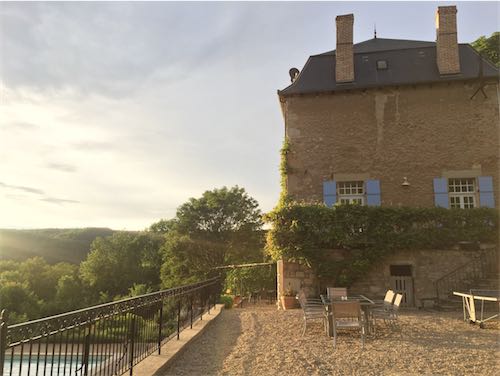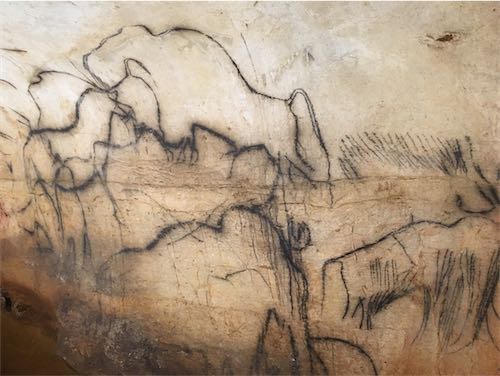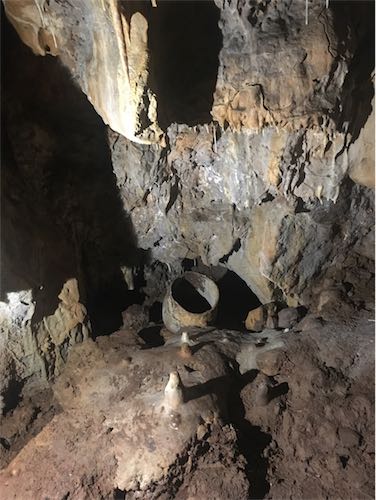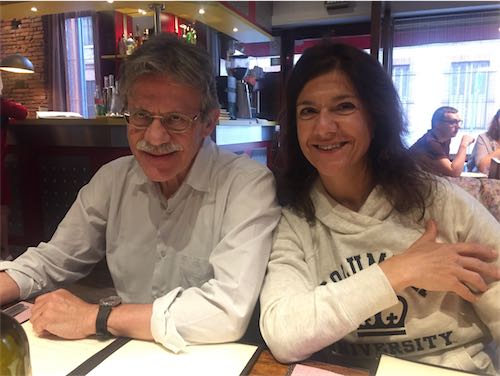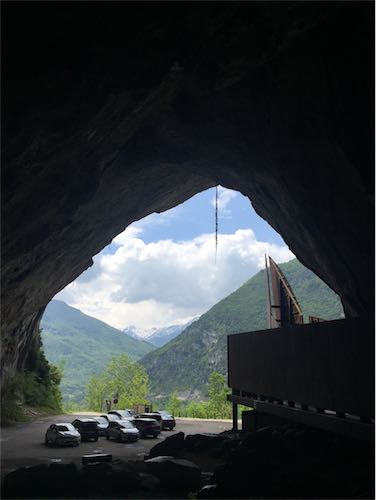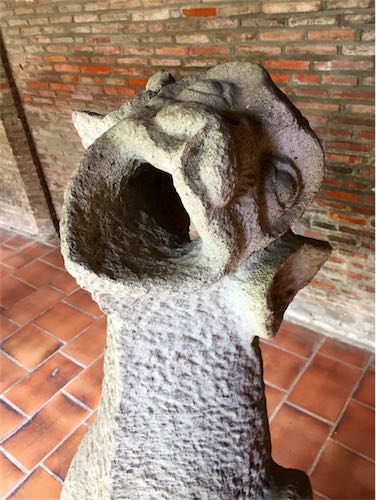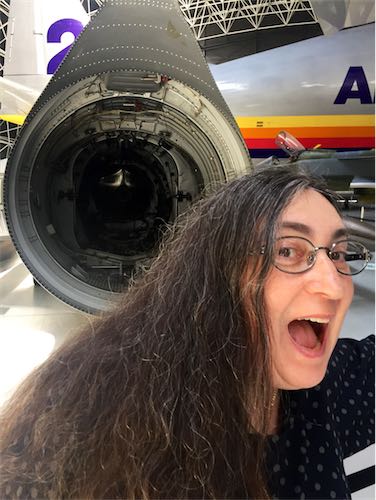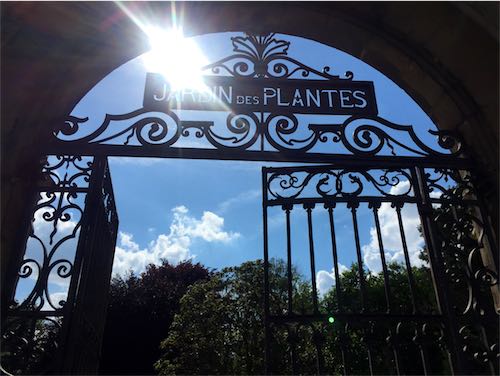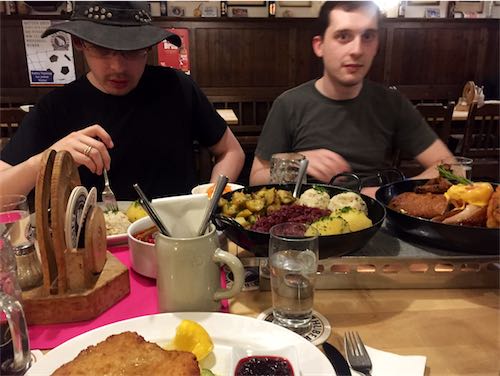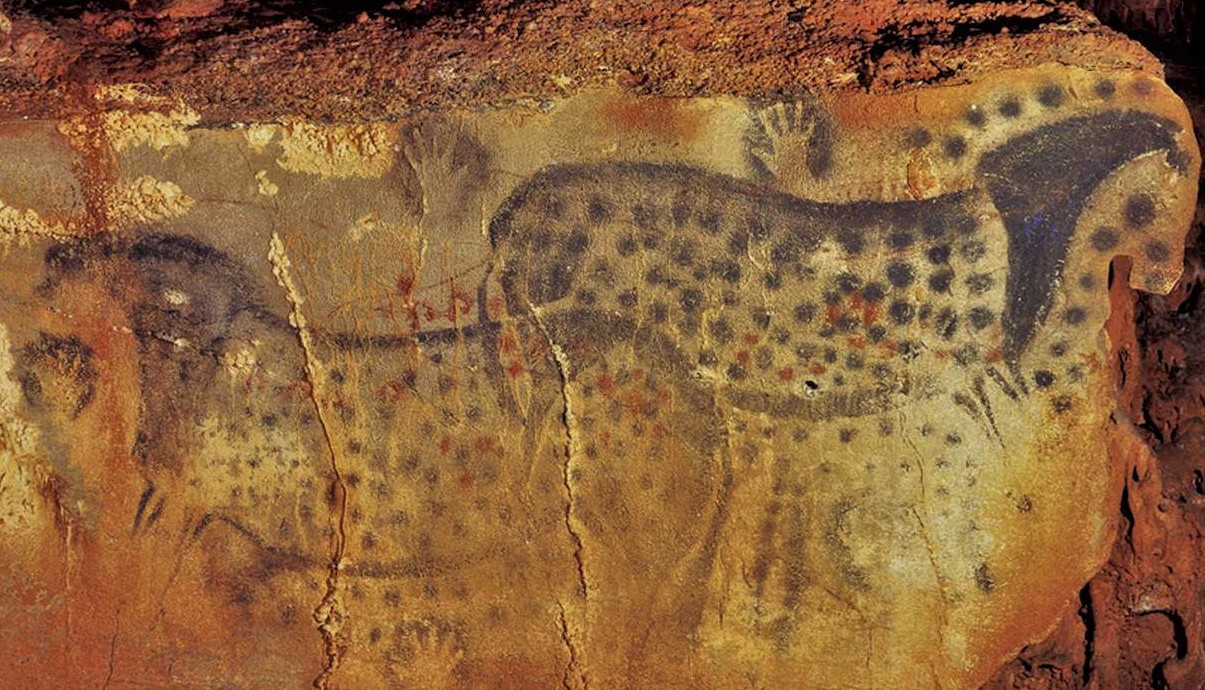Day 20 — Ambeyrac; Pech Merle; Cahors Airbnb Rental — Ambeyrac, Villefranche-de-Rouergue, Aveyron, Occitania map
Alarmingly, the day started with an email from our neighbor Andrea explaining that our home alarm went off. ADT calls Andrea if they can’t find us.
Andrea led a walkthrough of our home in the evening for five of the SFPD’s finest. Fortunately, they didn’t find anything and nothing seemed amiss. Unfortunately, they couldn’t find a way to reset the alarm—that will have to wait on our return. Andrea was amazing! Thank you for looking out for us—and giving the nice policemen a tour of our art, which apparently they liked.
Then we were off to caves containing prehistoric paintings. Driving there was a bit of a challenge. Much of it was along one lane mountain roads with cliffs towering above on one side and steep drops on the other, switching back and forth as the elevation changed. And the suggested speed for most of it was 90 kilometers per hour! When two giant trucks suddenly appeared rushing at us, Christopher heroically dove into a dirt road to give them room to pass. Fortunately, that didn’t happen often; there wasn’t much traffic.
There is no road going up to these houses! It’s a vertical climb. One guy runs a museum of his own art—there is a huge “no photographs or video” sign in front of his yard filled with sculptures from recycled materials.
The prehistoric paintings at La Grotte du Pech Merle (follow the link to see the navigable 360° photo from inside the cave) were wonderful. What we were seeing were not recreations, like those at Chauvet. Here was the real deal. We were within inches of artworks created over 30,000 years ago which is startling when you consider that the first traces of humans in the Americas dates back 15,000 years. After seeing the paintings at Chauvet, we were not surprised that the paintings were so good. These were created by neolithic masters.
There’s a mesh in front of the paintings that serves as the only barrier from the grubby hands of tourists.
There was also a little museum, Le Musée de Préhistoire Régionale Amédée Lemozi, that was part of the cave tour.
After the caves, we went to the medieval city of Cahors. We found Les Petits Producteurs, the highest-rated restaurant in Cahors on TripAdvisor and Christopher had exchanged emails in broken French with the proprietor, Yann Janicôt. We had planned on dinner, but he requested that we have a late lunch instead.
When we arrived, there was a woman for the retail part of the store, but Yann, who was to cook for us—and us alone—had not arrived yet. While we browsed, Tim was increasingly cranky. I explained to the woman, using clandestine hand signals, that if my men didn’t get some food right away it was going to turn ugly. She quickly produced a plate of complementary fois gras sandwiches and wine. Good woman!
It turned out that the place wasn’t actually a restaurant. It was more like a store—a fois gras and local comestibles store—with tasting tables.
Unfortunately, none of the store’s inventory would get past customs and the agricultural inspection, so we only bought what we could eat before we fly home. Sorry guys.
They didn’t serve dinner, but stayed open late to serve us. And it turned out to be one of the best meals we had! The fois gras was the standout. Nick counted that we ate fois gras served in eight different ways. The cassoulet was good, but not Lynn-good.
There was an attraction that we wanted to see in town next to the restaurant: the Cathédrale Saint-Étienne de Cahors, an 11th century church which transitions between Romanesque and Gothic architecture.
I dragged the boys to visit the church in the rain.
We also wanted to see the Valentré Bridge, described as the best preserved fortified medieval bridge in Europe. So, also in the rain, we walked across Cahors to see the bridge.
The map showed that there were the ruins of a Roman Amphitheater not far from us. Although we walked and looked, we never found a trace. Later on, we realized that the remains had been discovered when an underground car park had been excavated. Whatever there is to see is all underground.
All in all, great day!
